Danta (Baird’s Tapir)

Baird’s Tapir is the largest land mammal of Costa Rica – these beasts can weight up to 730lbs or 330kg, stand 1.2 meters or 4 feet in height, and stretch over 2 meters, or 6 feet, in length. And they are DANGEROUS – their powerful jaws have been used to gravely injure and even kill humans – with one famous case being that of Costa Rica’s Minister of Environment and Energy, Carlos Manuel Rodríguez, who was attacked by a Tapir in Corcovado National Park (more about this fascinating story later).
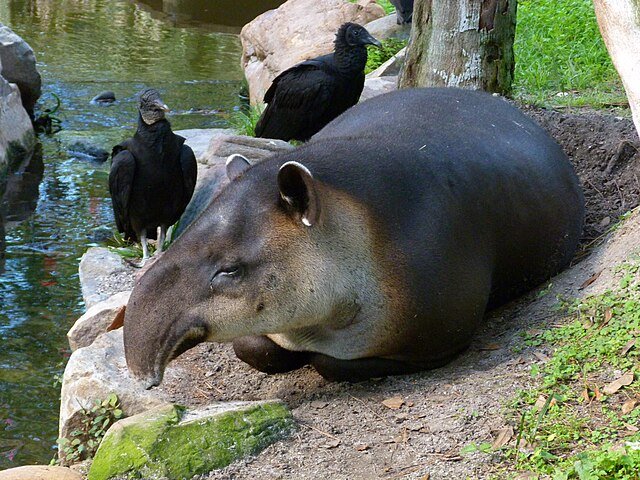
The Tapir is called Danta (from indigenous word for Buckskin) in many areas across its range. In parts of Mexico it is called Anteburro (Former Donkey) probably due to the resemblance between the animals. Panamanians and Colombians call it Macho de Monte (Strongman Of The Mountain), and in Belize, where the Baird’s Tapir is the national animal, it is known as the Mountain Cow.
THE TRADEMARL TRUNK
The tapir’s trunk—a flexible, prehensile extension of its upper lip and nose—is one of its most important tools. Though less dramatic than an elephant’s, it plays a vital role in daily survival. Tapirs use it to grasp branches, strip away leaves, and reach fruits hidden in thick foliage. This natural tool helps them forage with precision and ease.
Beyond feeding, the trunk helps tapirs explore their surroundings. It allows them to investigate objects and move through dense vegetation with care. In tight forest spaces, this kind of control can make all the difference
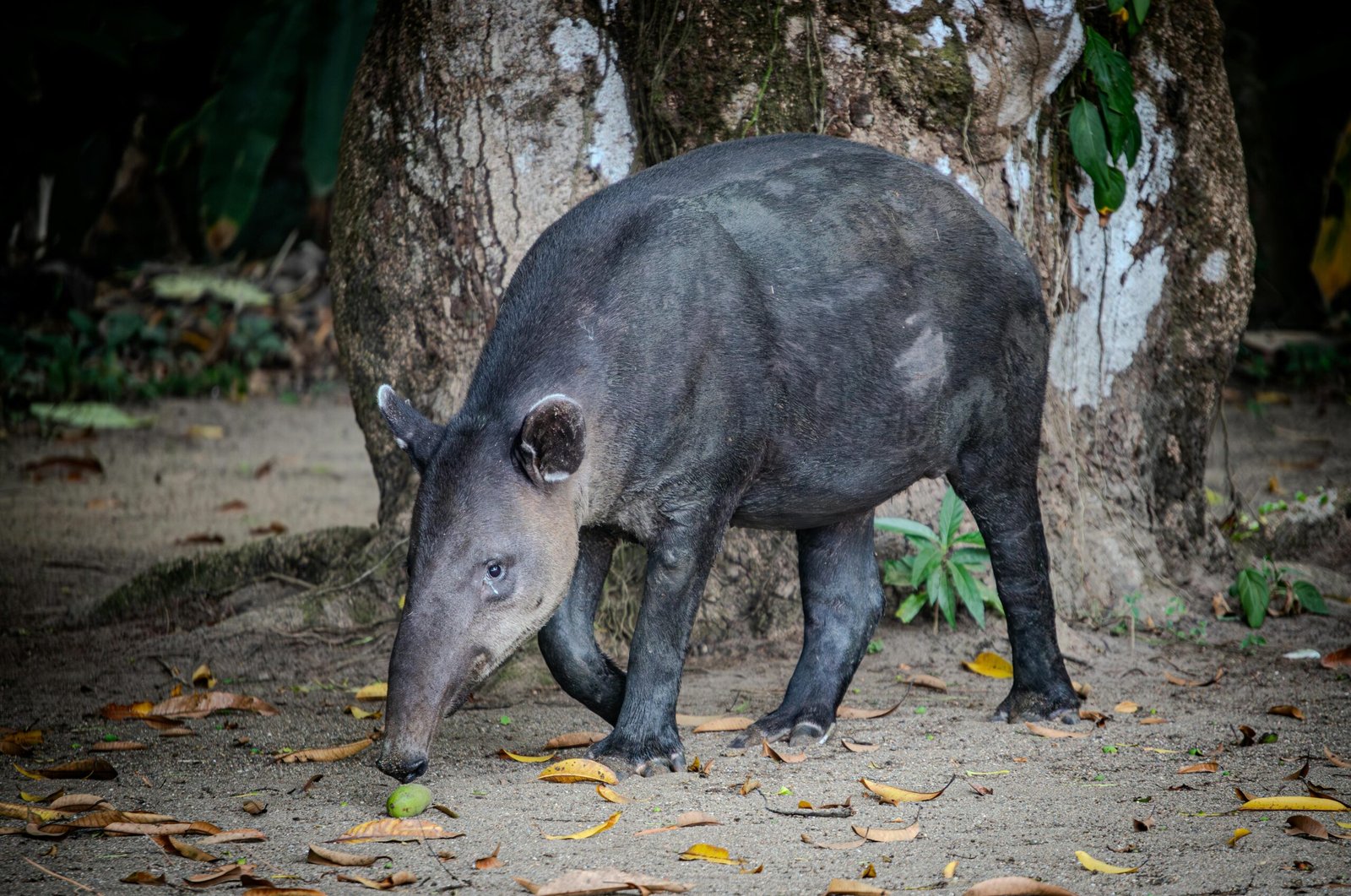
In addition, the trunk can be used as a snorkel – like the Elephant, the Tapir is able to submerge under the water and breathe through its surface-piercing trunk.

ATTACK on MINAE Minister Carlos Manuel Rodríguez
A Shocking Encounter
That dramatic encounter has become legendary in Costa Rica’s wildlife lore. Minister Rodríguez, while leading an anti-poaching hike through Corcovado National Park, spotted what looked like an injured young tapir. Acting on instinct, he left the trail and followed the animal into dense jungle, unaware of the danger ahead. The Park Rangers, assuming he was still on the path, didn’t realize he had gone missing until hours later.
What followed was a rare and violent tapir attack—likely triggered by a protective mother defending her calf. The Minister’s backpack absorbed much of the damage, and he escaped by leaping into a ravine, where he lost consciousness. The story underscores just how unpredictable wildlife encounters can be, even with animals generally known for their shy nature. It’s also a sobering reminder of why trained guides and strict protocols matter when navigating Costa Rica’s wild terrain.
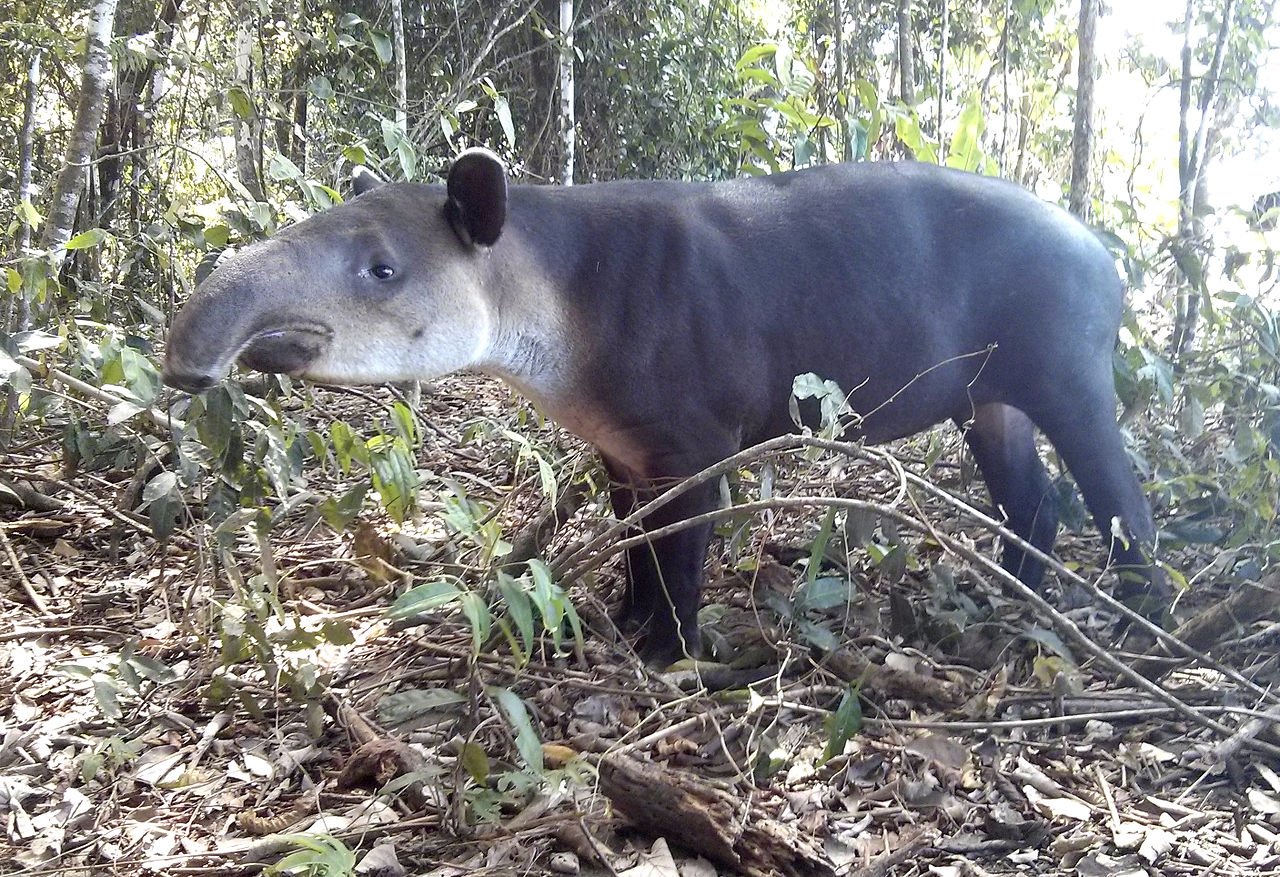
Respect the Local Wildlife!
That encounter sounds harrowing—and a powerful reminder of how fiercely protective tapir mothers can be. Though tapirs are generally shy and avoid humans, a startled or threatened mother defending her calf can become dangerously aggressive. The Minister’s backpack absorbing the worst of the attack likely spared him serious injury, and his leap into the ravine, though extreme, may have been his only option.
This kind of incident underscores the importance of keeping a respectful distance from wildlife, especially in dense jungle environments where visibility is low and maternal instincts run high. If you’d like, I can help craft a safety guide or interpret this event within a broader ecological or behavioral context.
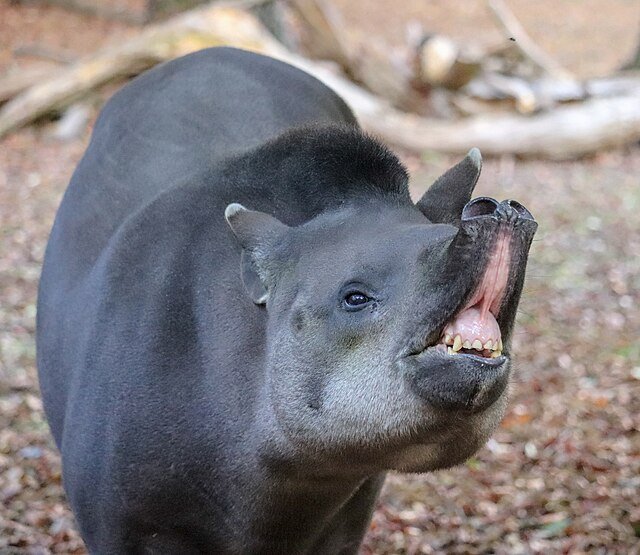
In a story worthy of its own article, the Minister then wandered through the dense, dangerous park for THREE DAYS before emerging at the isolated Sirena Beach and being rescued by the search party. He was then airlifted to medical facilities as, luckily, a dirt airstrip is located close-by.
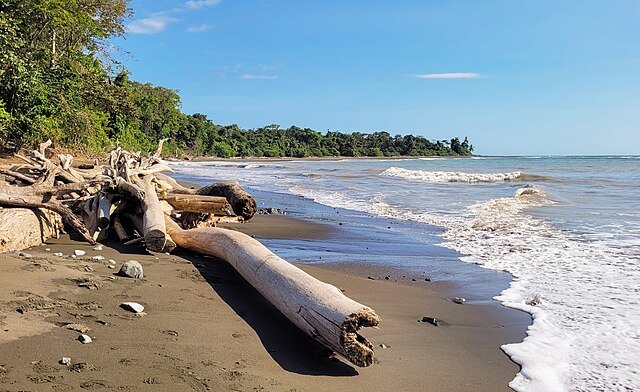

SAFETY AROUND TAPIRS
Never approach tapirs. Observe from a distance, take a photo if possible, and leave it at that. Tapirs tend to avoid people, and attacks are rare. They won’t wait around for a perfect shot. Getting too close may trigger a defensive charge, which can include serious bites. Tapirs become especially aggressive when protecting their young.
If you face a tapir unexpectedly, back away slowly. Don’t turn your back or make direct eye contact. Stay quiet and look for cover, like a large tree. Tapir charges are usually brief. If one begins, run immediately. Because tapirs have poor eyesight, zig-zagging may help you escape.
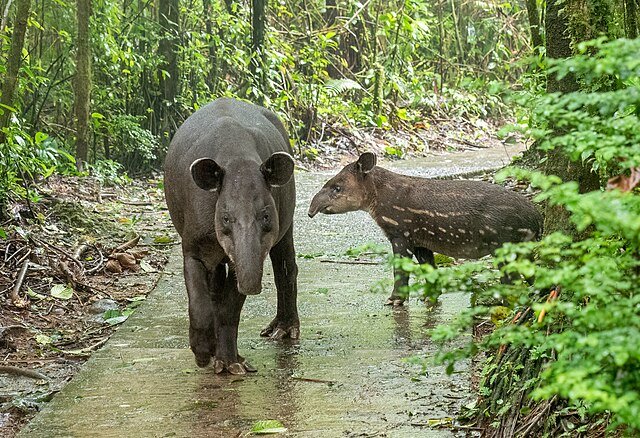
OTHER NOTABLE ATTACKS ON HUMANS
There are a number of recorded Tapir attacks, and research suggests that many attacks and injuries are not officially reported. Below is a list of a few notable incident – these may involve species other than Baird’s Tapir (click on year to follow link):
- 1998 – A Zookeper in Oklahoma City was viciously attacked, suffering severe bites and the loss of her arm.
- 2013 – A 2-year-old girl was mauled by a Tapir at the Dublin Zoo, during a supervised experience.
- 2016 – A man was killed by a Tapir in Brazil after encountering the animal in his corn field. He received numerous deep bites that led to fatal blood loss.
- An environmental research worker was attacked and injured in Ecuador.
The TAPIR family
Four tapir species exist today. Three live in South and Central America, while one inhabits Southeast Asia—specifically Thailand, Malaysia, Indonesia, and Burma. Tapirs share ancestry with horses, donkeys, zebras, and rhinos. All belong to the order Perissodactyla, known for odd-toed hooves and herbivorous diets. Tapirs are among the last surviving megafauna from the extinction event 12,000 years ago. They are also the only wild animals still able to pass Guanacaste seeds through their digestive systems without harming them.
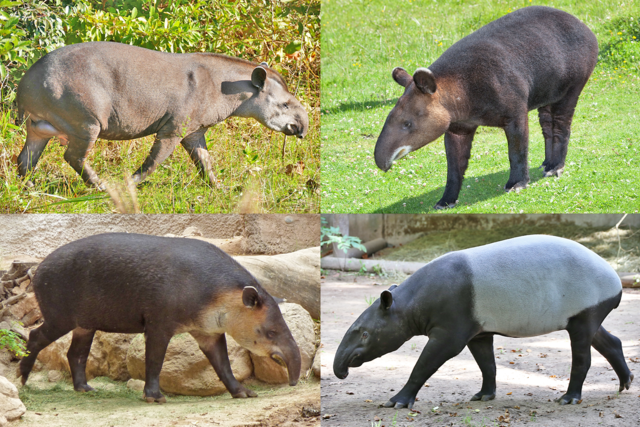
GARDENERS OF THE FOREST
Tapirs earn the nickname “gardeners of the forest” for their vital role in forest regeneration and biodiversity. They eat large amounts of fruit, nuts, and seeds from many plant species. Many of these fruits contain seeds too big for smaller animals to carry. Tapirs swallow the seeds whole and later deposit them in their dung. This dung acts as both a dispersal tool and a natural fertilizer. The process helps seeds germinate and supports healthy forest growth.
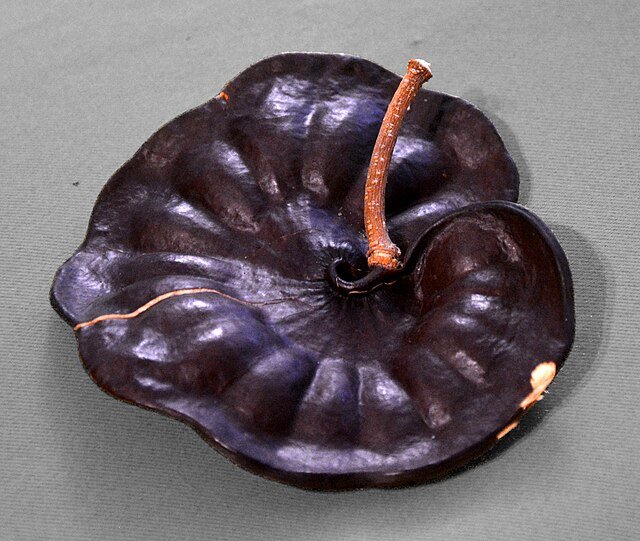
Tapirs are among the few animals that can eat whole Guanacaste pods without damaging the seeds. In Costa Rica, only large domestic animals like cows and horses share this ability. Most other animals chew the seeds, preventing them from germinating. In the past, megafauna such as Giant Sloths helped disperse these seeds across the landscape. Sadly, those ancient creatures no longer roam the forests. Tapirs now play a vital role in keeping this ecological process alive.

Tapirs traverse the forests in well-worn zig-zag trails that span across their range. This allows them to inspect the maximum amount of area in search for food, and is also thought to confuse predators.
TAPIRS & WATER
Tapirs love water and are considered semi-aquatic mammals. They often spend hours neck-deep in rivers, ponds, or lagoons. Water helps them cool off, bathe, feed on aquatic plants, and avoid biting insects. Tapirs also use water as a social space to meet others. When threatened, they flee toward nearby water sources. They can fully submerge to escape predators and hide beneath the surface.
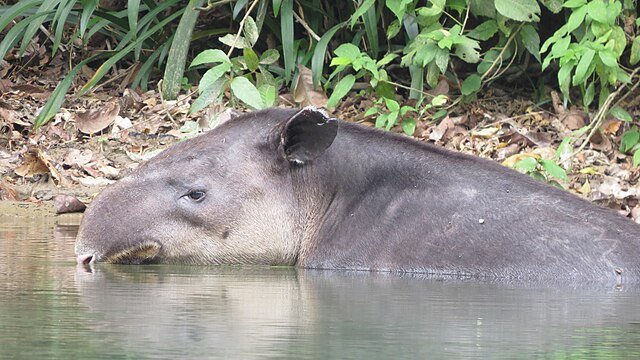
Tapirs share many aquatic habits with hippos. They can swim and walk along the bottom of rivers or lagoons while fully submerged. This helps them graze on water plants with ease. Their prehensile trunk also works like a snorkel, much like an elephant’s. Though tapirs don’t live in Africa, their appearance and behavior resemble large African mammals in striking ways.

ALL ABOUT OUR BAIRD’S TAPIR
Range & Habitat
Baird’s tapir ranges from northern Colombia to central Mexico. It is the only tapir species found in Central America. These animals prefer wet habitats like mangroves, marshes, swamps, and tropical rainforests. They also thrive near rivers, lakes, and lagoons. Tapirs feel more at home in secondary forests, where smaller trees make food easier to reach. Leaves, twigs, blossoms, fruits, nuts, and berries grow more accessibly in these areas. Tapirs also live in cloud forests at elevations up to 3,600 meters, or nearly 12,000 feet.
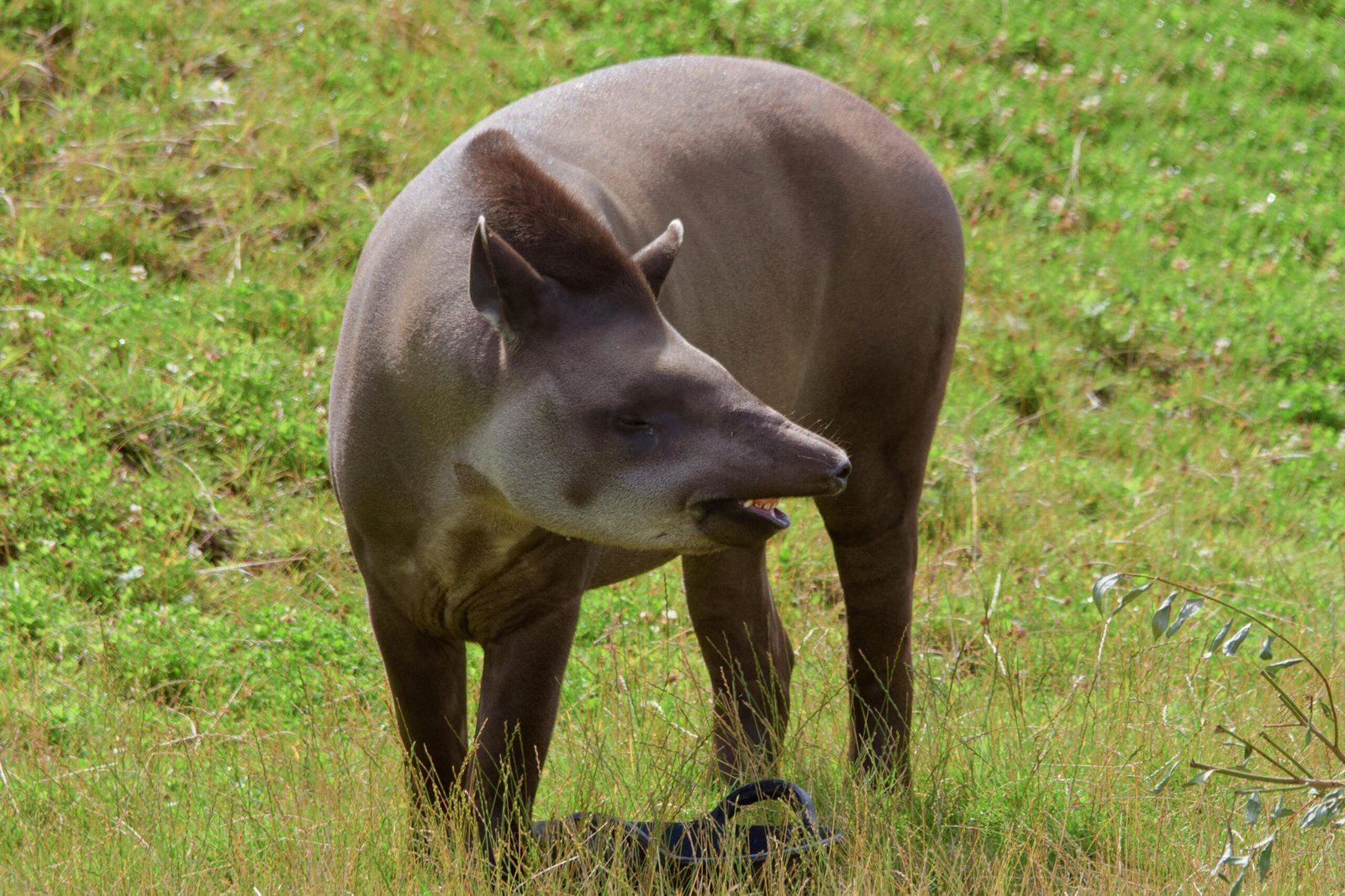
Predators
Baird’s tapirs, the largest land mammals in Central America, face few natural predators. Adult tapirs mostly fear jaguars and American crocodiles. Many survive these encounters, often bearing claw marks as proof. A study in Corcovado found tapirs with deep scars across their hides. Young tapirs face greater danger from pumas and large snakes. Humans sometimes hunt tapirs for meat or hides, though this happens rarely. Still, their slow reproduction makes every loss a serious threat to the population.
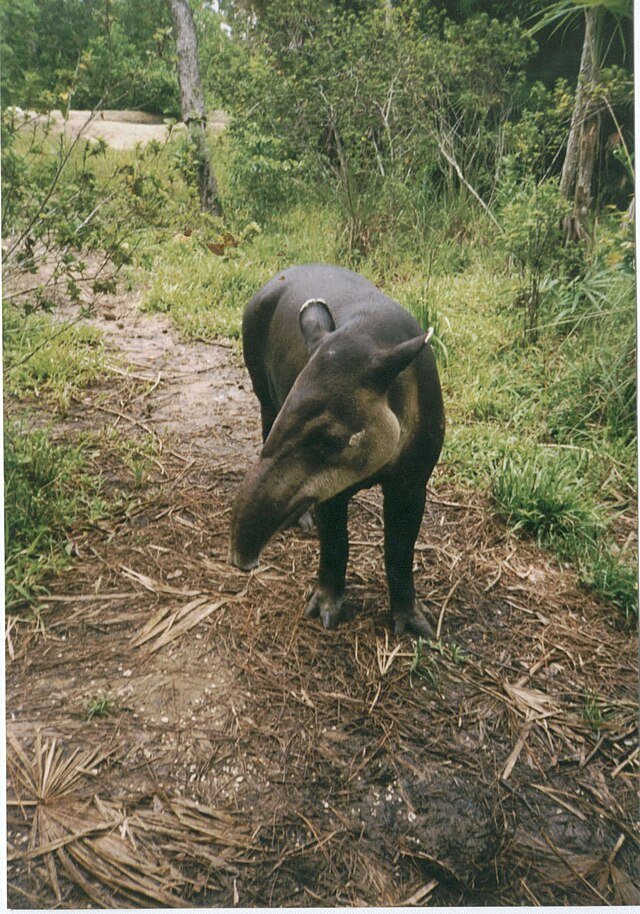
Diet
Tapirs eat a wide range of forest plants, including leaves, twigs, buds, blossoms, fruits, nuts, and berries. They sometimes rise on their hind legs to reach higher foliage. They also push over dead or thin plants to access fruit and leaves. A large fallen tree offers a feast, and tapirs may linger for several days to enjoy it.
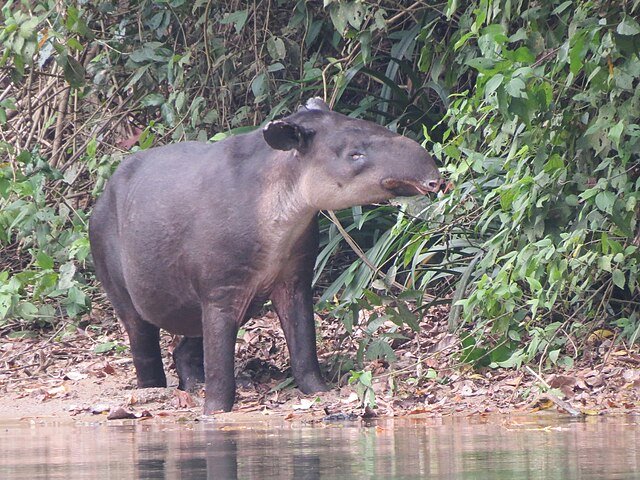
Young
Baird’s tapirs form monogamous pairs and build long-term bonds. They breed slowly, producing offspring only every two to three years. Their gestation lasts 13 months, one of the longest among mammals. Both parents help raise the young and stay together as a unit. The mother guides her calf by gently nudging it with her proboscis.
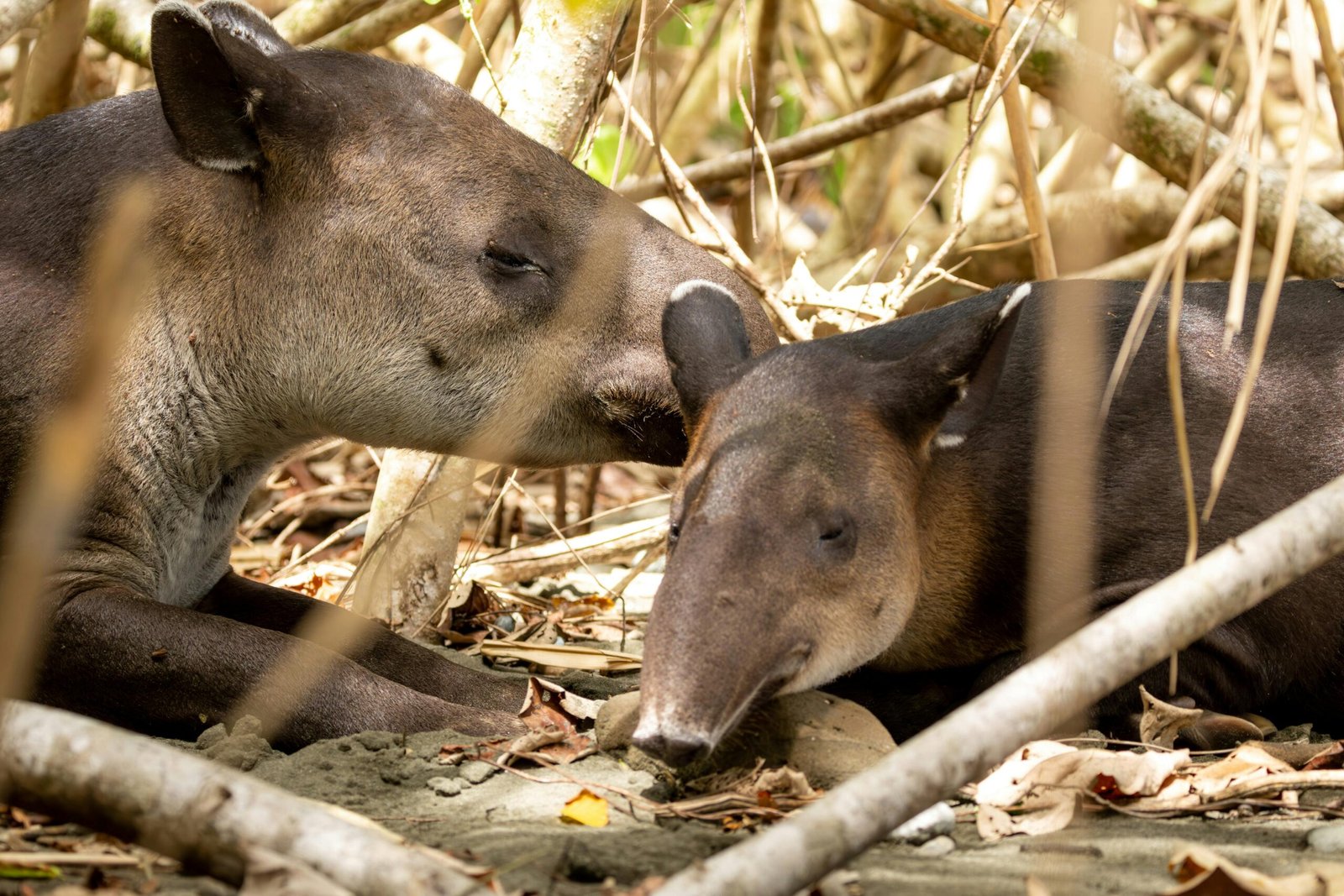
Young tapirs arrive with brown coats marked by bright stripes and spots. These patterns help them blend into the forest floor. As they grow, the markings fade and their coloring darkens. Calves depend heavily on their parents from birth. They nurse for up to eight months and stay close for at least a year.
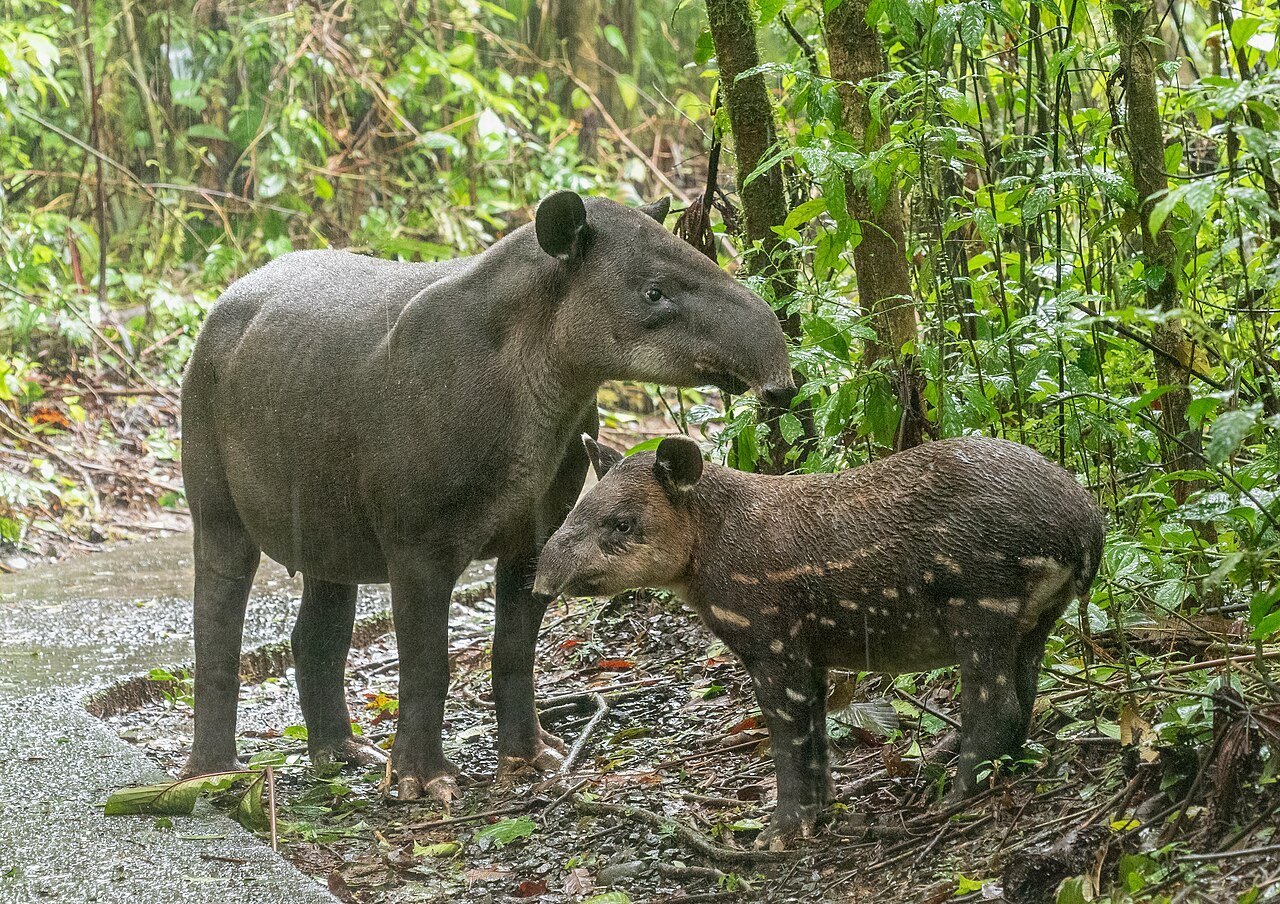
ENCUNTERING THE TAPIR IN COSTA RICA
Tapirs roam throughout Costa Rica, especially in large protected areas and national parks. Corcovado, Tortuguero, Rincón de la Vieja, and Braulio Carrillo offer strong chances for sightings. These parks provide dense rainforest and ideal tapir habitats. Travelers should hire knowledgeable guides and trusted tour companies when exploring these regions. Expert guidance increases safety and improves chances of spotting tapirs. Here are a few examples to help you begin your search:
- Tapir Valley Nature Reserve – A private ecological reserve near Tenorio Volcano National Park, dedicated to protecting Tapir habitat. Entry is by reservation only.
- Tapir’s Trail Tour – A guided tour in the Golfo Dulce Forest Reserve, near Drake Bay, known for Tapir sightings. Next door to Corcovado National Park.
- Tapirus Lodge Rainforest Tour – Located within a 475-hectare private reserve, this lodge offers guided hikes, birdwatching, and night tours where Tapirs are often spotted. Located next to Braulio Carrillo National Park.
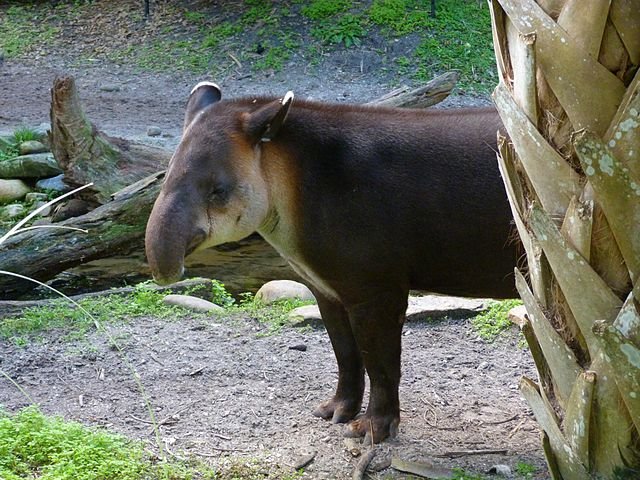
Do you dream of living in the midst of breathtaking tropical scenery and amongst amazing animals like the HUGE and IMPOSING Baird’s Tapir? At RE/MAX WE SELL PARADISE, we list hundreds of tropical properties – homes, land, farms, estates & businesses – all within a stone’s throw of the amazing rainforests, mountains, beaches and resident exotic animals that make Costa Ballena a world-famous destination. Start your journey to Paradise by browsing our property listings here.



